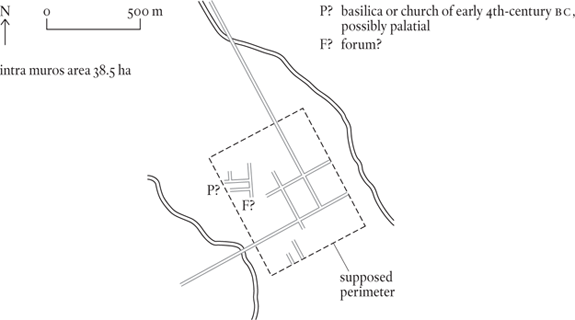
Present-day Szombathely, Vas province, Hungary
Capital of the late Roman province of Pannonia Prima; diocese: Illyricum
The colony of Savaria was founded by Claudius (AD 41–54) for the discharged veterans of the legion XV Apollinaris stationed at CARNUNTUM 130 kilometres (eighty miles) to the north. Scanty traces of the street plan survive, suggesting, according to the favoured reconstruction, a rectangular grid covering 38.5 hectares, although no more than thirty hectares in other versions. The town is said to have suffered damage in the Marcomannic War of AD 171–5 and the Gothic incursions of the 250s, but it survived well enough to be made the capital of Pannonia Prima when Diocletian divided the old province of Pannonia Superior into northern and southern halves – Pannonia Prima and Savia – in 297. New buildings – what is probably a palace of the Constantinian period, plus an inscription denoting the reconstruction of a granary by Constans’ praetorian prefect c. 348 – celebrate this promotion and bring Savaria to a new high, although, as is typical of fourth-century embellishments, the prosperity was somewhat artificial, being dependent on the expenditure of central funds, and correspondingly precarious. Included in the package was a permanent garrison, the first we know of. It probably consisted of the Lanciarii Sabarienses, a unit that features in the late Roman army list known as the Notitia Dignitatum.
The financial crisis that followed the reign of Julian the Apostate (361–3) seems to have exposed Savaria’s vulnerability. Ammianus Marcellinus, writing of the emperor Valentinian II’s visit in 375, says that ‘the town was weak, having suffered repeated misfortunes’ (30.5.14–17) and gives a telling instance of the low ebb to which its affairs had come. Valentinian, who was on his way to Gaul, wanted to leave by the west gate, but found it so deeply buried in rubbish that he had to send a working party to open it up. Even then, he was thwarted: the portcullis had jammed and the best efforts of his soldiers failed to shift it. The emperor had to leave by another gate.
Savaria lingered on until the fall of the empire in the West, the coup de grâce apparently being delivered by an earthquake in 455. It can never have been a very big place, with a population of no more than 3,000 to 4,000 (not counting its garrison), even in its early fourth-century heyday.